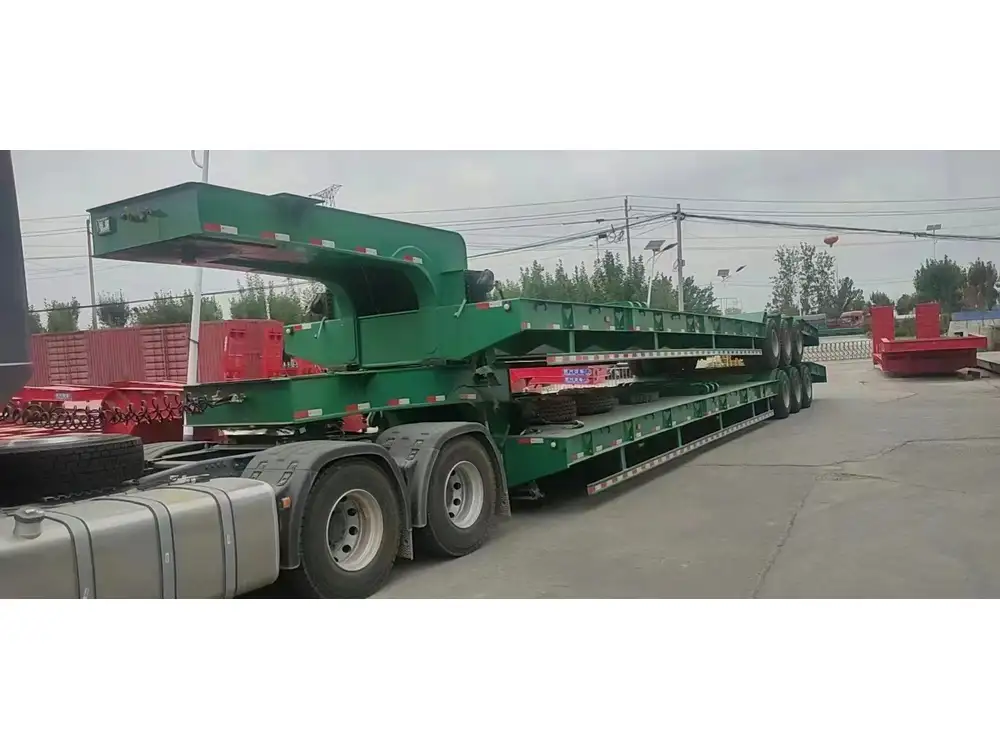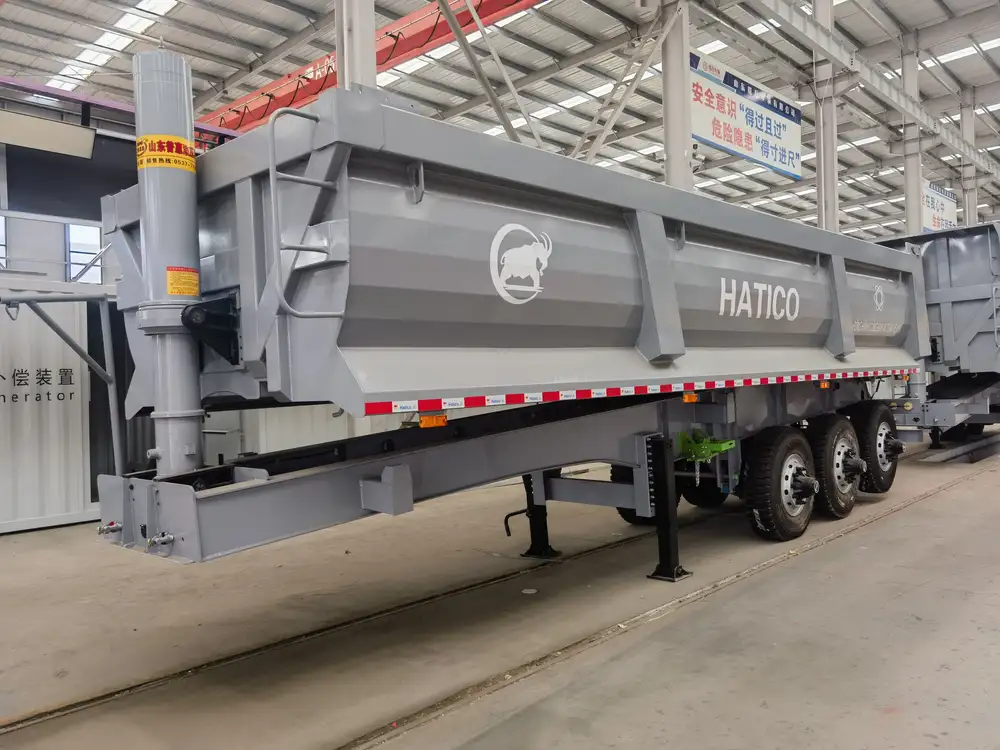When it comes to transporting soil, the choice of vehicle is crucial for maximizing efficiency and minimizing costs. One of the most commonly utilized vehicles in the construction and landscaping industries is the trailer dump truck. Understanding the capacity of these trucks is essential for contractors, landscapers, and landscapers alike. This article delves into the factors that affect the carrying capacity of trailer dump trucks, variations across different models, and best practices for maximizing efficiency during soil transport.
Understanding Trailer Dump Truck Capacities
What is a Trailer Dump Truck?
Trailer dump trucks are essential vehicles in construction projects, specifically designed to transport loose materials like soil, gravel, or sand. They consist of a truck chassis and a separate trailer, which provides additional carrying capacity. This combination allows for the transportation of significant amounts of material in one go, saving time and reducing the number of trips required.

Capacity Determinants
The capacity of a trailer dump truck to transport soil is mainly influenced by several factors, including:
Truck Size and Configuration:
The overall dimensions of the truck play a critical role. Trailer dump trucks come in various sizes, typically categorized as:- Light-duty: Carrying up to 5 cubic yards of soil.
- Medium-duty: Transporting between 6 and 12 cubic yards.
- Heavy-duty: Capable of holding from 12 to 16 cubic yards or more, depending on the model.
Trailer Specifications:
Different trailers exhibit various designs, including single-axle and tandem-axle setups, influencing carrying capacity. The wheelbase, suspension type, and axles all contribute to how much weight can be safely loaded onto the truck.Material Density:
The type of soil or material being transported also affects capacity. For instance, wet or compacted soil has a higher density than dry soil, meaning that a truck can carry less weight per volume. This leads us to consider the cubic yard to ton conversion, as seen in the table below:Type of Soil Cubic Yard (yd³) Weight (Tons) Dry Soil 1 1.25 Wet Soil 1 1.5 Clay 1 1.4 Sandy Soil 1 1.2 Mulch 1 0.5
Common Capacity Ranges
Most trailer dump trucks can hold between 10 to 16 cubic yards of soil. However, the exact capacity can vary based on the factors outlined earlier. For instance:
- A tandem-axle dump truck typically offers a higher cubic yard capacity compared to single-axle models.
- Specialty designs or configurations, like quad-axles, can push the limit even further, often increasing the capacity to 16 cubic yards or more.
Calculating Soil Volume and Weight
Knowing how much soil a trailer dump truck can hold is necessary, but equally important is understanding how to calculate soil weight and volume accurately. Soil is often measured in cubic yards, but converting volume to weight can be perplexing due to its variable density. Here are steps to calculate:

Conversion Formula
Volume Calculation:
Multiply Length × Width × Height (in yards) to get cubic yards.Weight Calculation:
Multiply the cubic yards of soil by the weight per cubic yard (varying from 1.2 to 1.5 tons, depending on moisture content).
For example, if a dump truck has an internal dimension of 3 feet high, 6 feet wide, and 12 feet long, the volume in cubic yards is:
Convert dimensions to yards:
Length = 12 / 3 = 4 yards
Width = 6 / 3 = 2 yards
Height = 3 / 3 = 1 yardVolume = Length × Width × Height = 4 × 2 × 1 = 8 cubic yards.
With a dry soil density of 1.25 tons per cubic yard:
- Total weight capacity = 8 × 1.25 = 10 tons.
Practical Implications
Understanding these calculations is essential when planning for soil transport to ensure that the trailer dump truck can handle both the volume and weight of the load. Overloading is dangerous and can lead to accidents, vehicle damage, and legal repercussions.
Choosing the Right Dump Truck for Soil Transport
Choosing the appropriate dump truck for soil transport revolves around several key considerations:
Project Requirements:
Assess the scope of your project. Smaller landscaping jobs may require a light-duty dump truck, while larger construction projects benefit from heavy-duty options with greater capacity.Terrain and Accessibility:
The terrain where soil will be loaded and delivered plays a crucial role. Steeper and more rugged environments may limit the type and size of the dump truck that can be used.Weight Restrictions:
Always check local regulations regarding weight limits on roads and job sites. Overloading can lead to costly fines and increase wear on the vehicle.Budget Constraints:
While larger, more powerful trucks offer better capacity, they also come with increased operating costs. Consider the balance between truck size and project budget.

Best Practices for Transporting Soil
To ensure efficient and safe transport, consider these best practices:
Proper Loading Techniques
Distribute Weight Evenly:
Load soil evenly across the bed to maintain balance and prevent tipping. Avoid “piling” soil too high which may cause instability.Know the Limitations:
Always adhere to the manufacturer’s specifications for maximum weight and volume. Keeping within these limits ensures safety and longevity for the truck.
Efficient Routing
Plan Your Route:
Identify the best route for swift delivery. Avoiding congested areas and road detours minimizes transit time.Use GPS Technology:
Leverage modern navigation technologies to find optimal pathways, track the load, and ensure timely deliveries.

Safety Protocols
Regular Maintenance:
Scheduled inspections and maintenance can prevent breakdowns and promote the longevity of the dump truck.Training Operators:
Ensure that operators are well-trained in loading and driving dump trucks, particularly in regards to weight limits and safety measures.
Conclusion
Determining how much soil a trailer dump truck can hold is pivotal for any construction or landscaping project. By understanding the capacity of different truck sizes, calculating weight accurately, and implementing best practices, you can ensure efficient project execution. Whether you’re a contractor looking to procure heavy-duty trucks or a landscape worker needing a lightweight option, making informed decisions will prove essential. Keep these guidelines in mind as you navigate the realm of soil transport, and elevate your projects towards success.
By acknowledging the complexities involved in soil transportation and using the relevant data to make decisions, you stand to reduce costs while maximizing performance, productivity, and safety.



